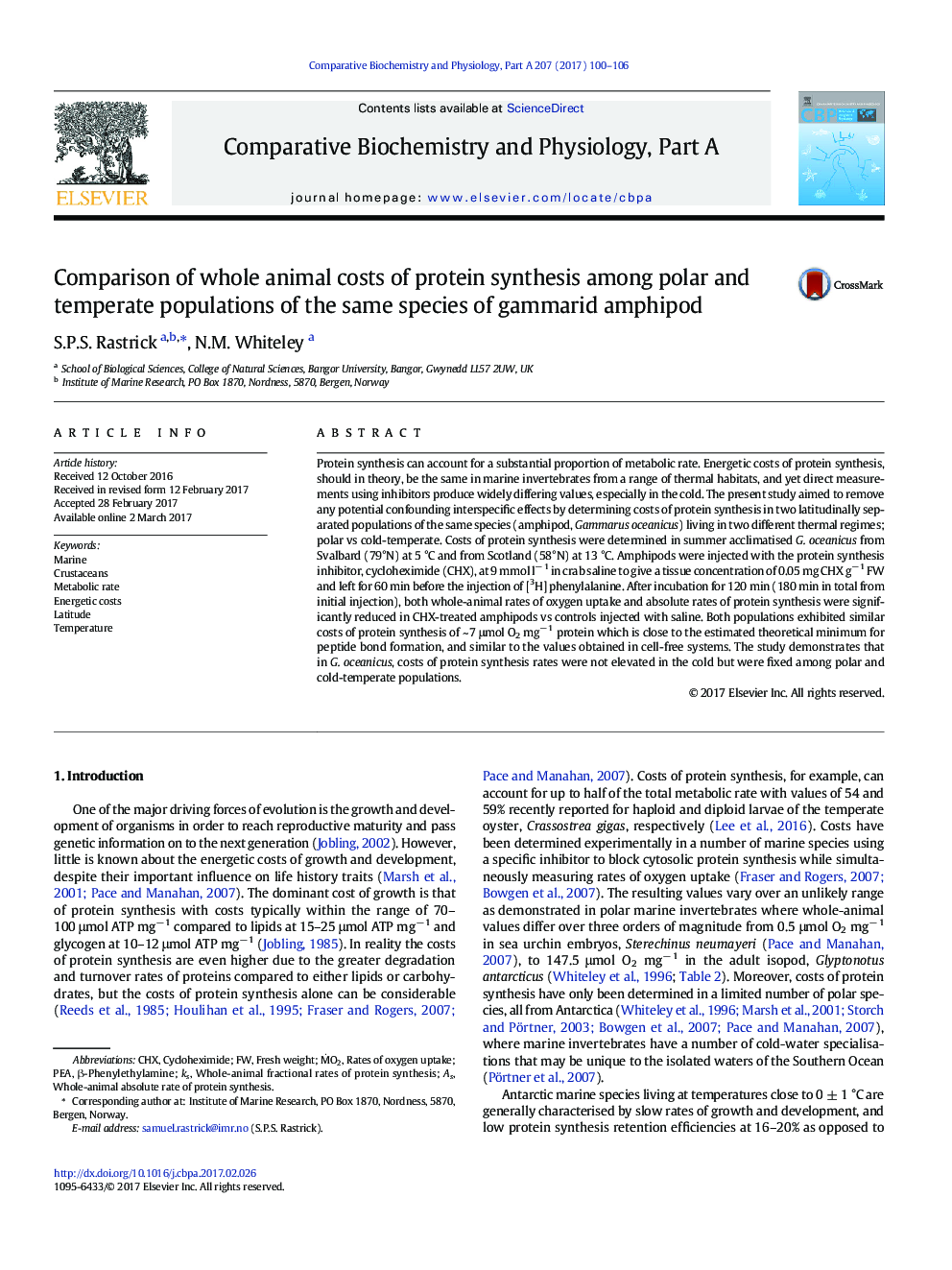| Article ID | Journal | Published Year | Pages | File Type |
|---|---|---|---|---|
| 5510342 | Comparative Biochemistry and Physiology Part A: Molecular & Integrative Physiology | 2017 | 7 Pages |
Protein synthesis can account for a substantial proportion of metabolic rate. Energetic costs of protein synthesis, should in theory, be the same in marine invertebrates from a range of thermal habitats, and yet direct measurements using inhibitors produce widely differing values, especially in the cold. The present study aimed to remove any potential confounding interspecific effects by determining costs of protein synthesis in two latitudinally separated populations of the same species (amphipod, Gammarus oceanicus) living in two different thermal regimes; polar vs cold-temperate. Costs of protein synthesis were determined in summer acclimatised G. oceanicus from Svalbard (79°N) at 5 °C and from Scotland (58°N) at 13 °C. Amphipods were injected with the protein synthesis inhibitor, cycloheximide (CHX), at 9 mmol lâ 1 in crab saline to give a tissue concentration of 0.05 mg CHX gâ 1 FW and left for 60 min before the injection of [3H] phenylalanine. After incubation for 120 min (180 min in total from initial injection), both whole-animal rates of oxygen uptake and absolute rates of protein synthesis were significantly reduced in CHX-treated amphipods vs controls injected with saline. Both populations exhibited similar costs of protein synthesis of ~ 7 μmol O2 mgâ 1 protein which is close to the estimated theoretical minimum for peptide bond formation, and similar to the values obtained in cell-free systems. The study demonstrates that in G. oceanicus, costs of protein synthesis rates were not elevated in the cold but were fixed among polar and cold-temperate populations.
